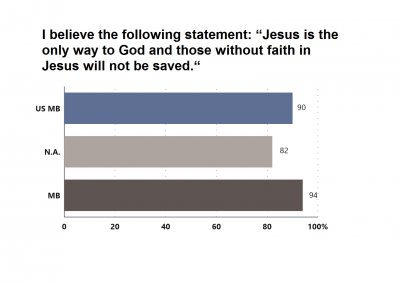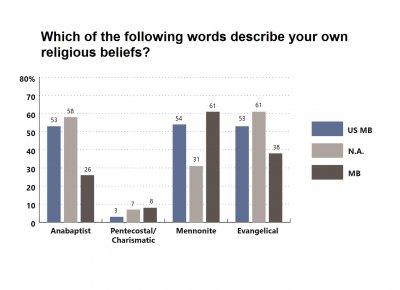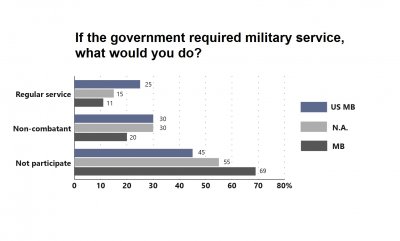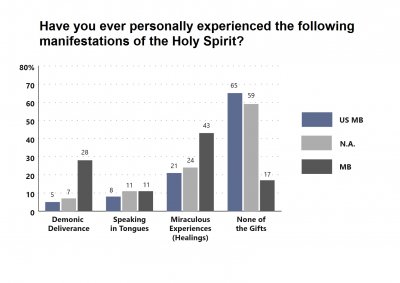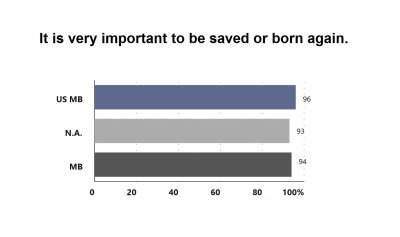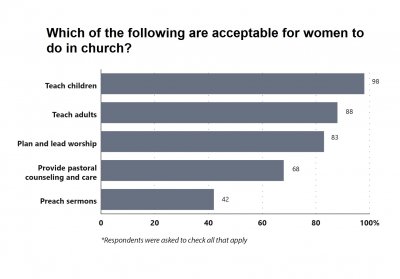North America
Brethren in Christ Church (United States)
Congregations: 252 | Members: 23,980
- The Brethren in Christ Church (USA) distributed the survey to members in all congregations for whom the congregation had an email address. As a result, it is not possible to determine response rates of congregations or members.
- The average size of congregations in the Brethren in Christ Church (USA) is 94 members.
- Forty-seven percent of respondents were women and 53 percent were men.
- Fifty-seven percent of members live in rural areas—making this church the most rural of all the North American GAP conferences.
- The average age of respondents is 54 years. Twenty-nine percent are within childbearing age (18-45 years), the lowest percentage among North American churches in the GAP.
- Eighty-four percent of respondents are married and just 7 percent are single.
- Only six percent are homemakers (the lowest of the churches in North America), 18 percent are engaged in church-related work, only 6 percent are in agriculture, and 56 percent are professionals.
- Seventy percent have graduated from college.
- Sixty-eight percent grew up in a home where neither parent was a member of the Brethren in Christ Church (USA), second highest among North American GAP churches.
- Fifty-six percent of respondents reported being baptized in a church other
than the Brethren in Christ Church (USA).
We can use this data to correct misconceptions of our church, for example, to point to the diversity of the church with regard to various theological traditions.
–Research Associate Ron Burwell
History
The Brethren in Christ in the US formed in south-central Pennsylvania between 1775 and 1778, in response to revival movements in the region at that time. The first meetings were held on Jacob Engle’s farm, and German-speaking Anabaptists from a variety of groups joined. Participants emphasized the importance of an individual conversion experience and baptism by immersion. Through migration the group expanded to Canada and the US Midwest and western states. Historically the Brethren in Christ have reflected a combination of Anabaptism, Pietism, Holiness tradition, and evangelicalism. The Brethren in Christ began mission work domestically and internationally in the 1890s; by the mid-twentieth century, they were very active in international mission work. The 1950s brought additional changes, including permitting musical instruments in worship, more programming for youth, and less strict dress requirements.
Challenges
The Brethren in Christ Church sent an electronic survey to email addresses provided by the national church office. In comparing the results with previous surveys conducted by the denomination, however, there is some evidence that this method may have deterred members with limited computer knowledge or access from responding.
Graphs
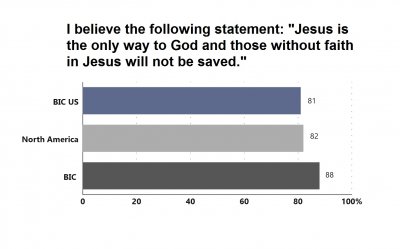
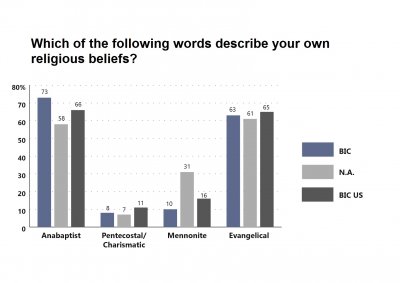

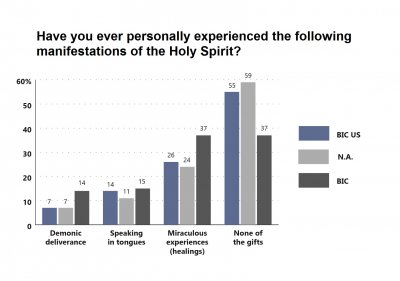
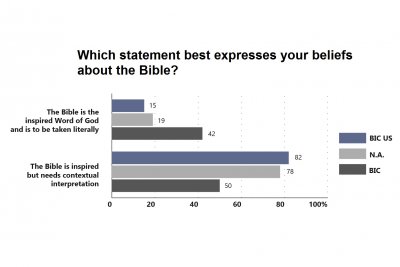
Brethren in Christ Canada
Congregations: 54 | Members: 4,013
Demographic Profile
- Eighty-nine percent of congregations and 32 percent of members in the original sample participated in the GAP.
- The average size of congregations in the Brethren in Christ Canada is 74 members.
- Fifty-five percent of respondents were women and 45 percent were men.
- Thirty-seven percent of members live in rural areas and 63 percent in urban areas, making this church the most urban in North America among the GAP churches.
- The average age of respondents is 50 years. Forty percent are within childbearing age (18-45 years).
- Fourteen percent of respondents are single, 7 percent separated or divorced (the highest percentage among North American churches), and 74 percent are married.
- Nine percent reported being homemakers, only 7 percent are engaged in agriculture, 49 percent are professionals, and 24 percent do some kind of manual labor.
- One percent of members did not graduate from high school, 30 percent received at least a high school diploma, and 70 percent are college graduates.
- Eighty-six percent grew up in a home where neither parent was a member of the Brethren in Christ Canada—by far the highest percentage of any GAP church in North America.
- Sixty-six percent of respondents reported being baptized in a church other than the Brethren in Christ Canada, the highest percentage of any North American GAP church.

When it came to the church-specific questions, there was an overwhelming agreement that the church needs to continue planting churches. This will inspire and encourage the leadership to keep on that mission.
–Research Associate Roger Massie
History
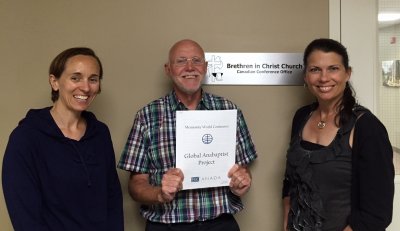
The Brethren in Christ formed in Pennsylvania, around 1778, following revival efforts in the area. This movement grew and soon spread into Ontario and across the United States through resettlements. Brethren in Canada began meeting with Brethren in the United States as a united conference around 1870. In addition to Ontario, groups also settled in what is now Saskatchewan in the early twentieth century and established congregations there.
During World War I, several Brethren in Christ men were incarcerated for refusing to enlist and to wear the uniform, even as non-combatants. Another challenge to the unity of the group was the movement to adopt Wesleyan Holiness teaching, which came through the Brethren in the U.S. Despite some strong resistance to this teaching, it was officially adopted and promoted in the Canadian church. Today the church seeks to connect its mission and Anabaptist perspective with Canada’s increasingly secular context.
Graphs
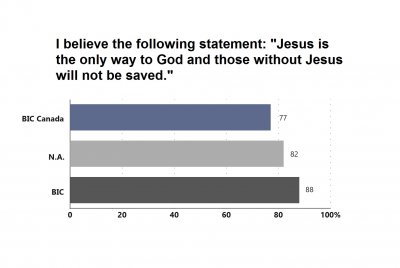
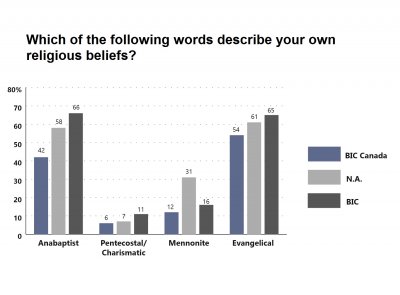
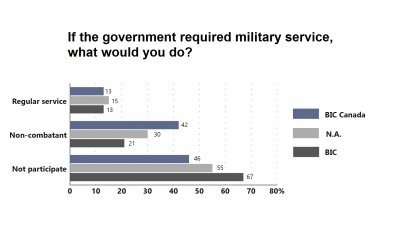
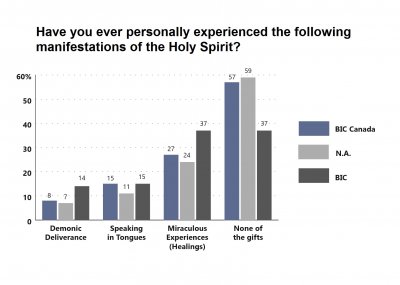
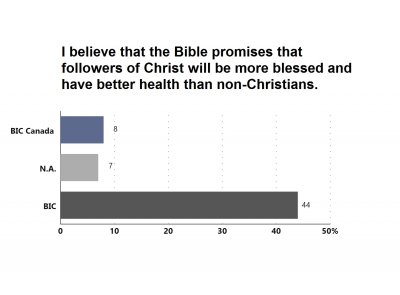
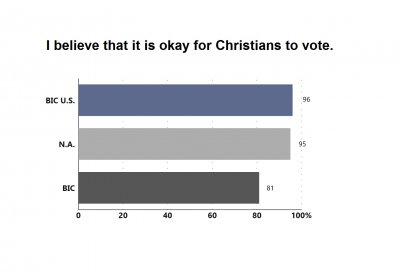
Evangelical Mennonite Conference (Canada)
Congregations: 62 | Members: 7,255
Demographic Profile
- Seventy-one percent of congregations and 16 percent of members in the original sample participated in the GAP.
- The average size of congregations in the Evangelical Mennonite Conference is 117 members.
- Fifty percent of respondents were women and 50 percent were men.
- Fifty-four percent of members live in rural areas and 46 percent in urban areas.
- The average age of respondents is 47 years, making the Evangelical Mennonite Conference the youngest North American church in the GAP.
- Fifty-one percent are within childbearing age (18-45 years), the highest percentage among North American conferences.
- Seventeen percent of respondents are single—a reflection of the younger age of this church—77 percent are married.
- Seventeen percent are homemakers and 25 percent are engaged in agriculture—both percentages being the highest among any GAP church in North America. Only 37 percent are professionals—the lowest among North American GAP churches.
- Seventy-seven percent have graduated from high school, and 41 percent from college—educational levels that are the lowest among North American GAP churches.
- Fifty-four percent grew up in a home where neither parent was a member of the Evangelical Mennonite Conference.
- Forty-three percent of respondents reported being baptized in a church other than the Evangelical Mennonite Conference.

We [the Evangelical Mennonite Conference] are more charismatic than I thought we were.
–Abe Bergen, EMC representative
History
The Evangelical Mennonite Church of Canada traces its roots to the Molotschana Mennonite settlement in Russia, where a small group dissatisfied with colony and church leadership formed in 1812, eventually calling itself Kleine Gemeinde. Sixty families from the Kleine Gemeinde immigrated to Manitoba in Canada in 1874. Contact with John Holdeman of the Church of God in Christ—an offshoot of the Mennonite Church in Ohio—led to a traumatic schism within the Kleine Gemeinde in 1881.
The Holdeman schism left leaders suspicious of innovation and change, and the group steadily lost families as the years progressed. Following World War I, however, the EMC started allowing automobiles, developed Sunday School and young people’s meetings, and introduced choir singing, among other changes. These developments were accompanied by remarkable growth, leading to new education and mission efforts in the late 1930s. A strong emphasis on missions has continued to the present day. The EMC is currently experiencing a demographic shift from being a predominantly rural church to an increasingly urban one.
Graphs
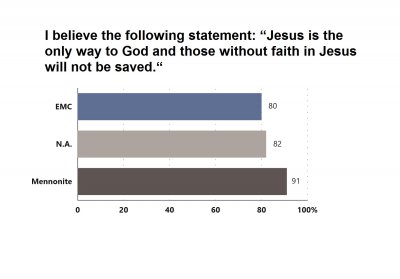
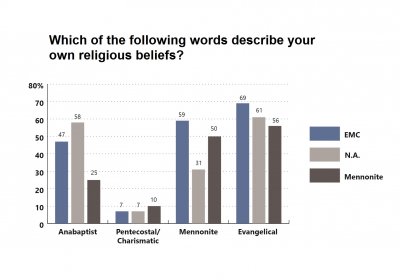
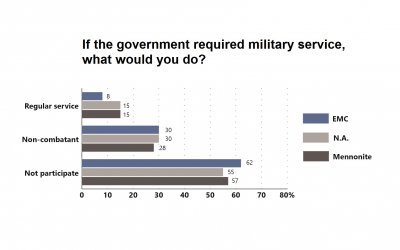
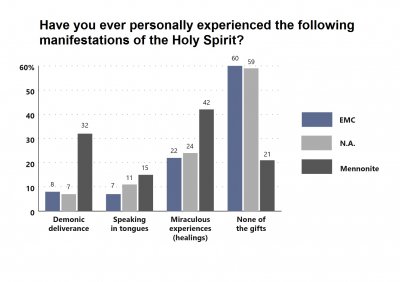
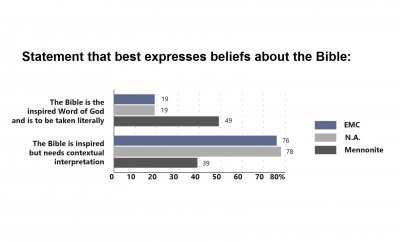
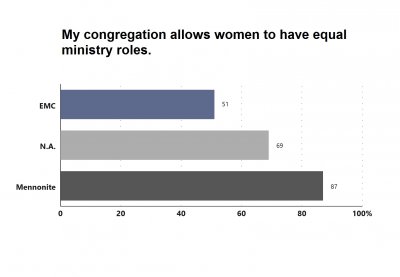
U.S. Conference of Mennonite Brethren Churches
Congregations: 177 | Members: 35,125
Demographic Profile
- The average size of congregations in the U.S. Conference of Mennonite Brethren Churches is 198 members.
- Fifty-two percent of respondents were women and 48 percent were men.
- Fifty-two percent of members live in rural areas—48 percent in urban areas.
- The average age of respondents is 58 years, making the U.S. Conference of Mennonite Brethren Churches one of the oldest conferences in the GAP study—second only to the Arbeitsgemeinschaft Mennonitischer Gemeinden in Deutschland (Germany). Twenty-three percent are within childbearing age (18-45 years).
- Eighty-seven percent are married and 5 percent are widowed.
- Ten percent are homemakers, 13 percent are engaged in agriculture, 19 percent in manual labor, and 50 percent are professionals.
- All have graduated from high school and 62 percent from college.
- Nearly one-half (51%) grew up in a home where one or both parents was a member of a Mennonite Brethren congregation—this is the highest intergenerational membership percentage of any North American conference.
- Forty-four percent of respondents reported being baptized in a church other than a Mennonite Brethren congregation.
History

The Mennonite Brethren church in North America has its roots in the mass migrations of Russian Mennonite Brethren to the continent in the late 1800s. The churches that grew out of these migrations formed the General Conference of Mennonite Brethren, joining congregations in the U.S. and Canada in mission and education efforts. Mission work, both domestically and internationally, was of great importance to the conference.
In the 1920s a second wave of Mennonite Brethren migration from Russia to Canada added to the existing conference. Partially because they did not receive a wave of Russian immigration at this time, Mennonite Brethren in the U.S. more rapidly adopted English and other cultural trends. By the 1950s, the MB population in Canada surpassed MB membership in the U.S., leading to increasing separation along national lines within the General Conference. The General Conference dissolved in 2002 and the US Conference of Mennonite Brethren has since existed as its own conference.
Challenges
Because of low response rates in the original congregational sample, the U.S. Conference of Mennonite Brethren Churches surveyed additional congregations and respondents.
Graphs
